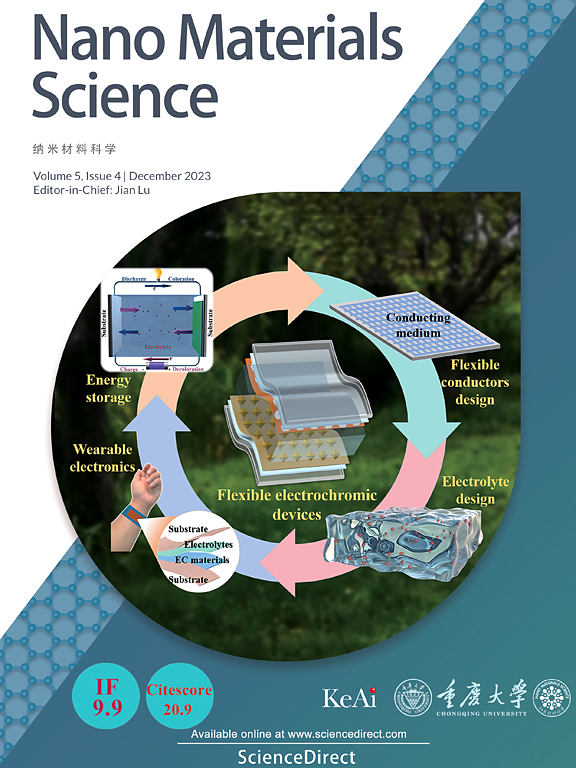Transport properties of two-dimensional MoSe2 and its application to high-performing all-2D photodetector
IF 17.9
2区 材料科学
Q1 Engineering
引用次数: 0
Abstract
The transport properties of two-dimensional (2D) molybdenum diselenide (MoSe2) were comprehensively investigated. To understand experimental data, a detailed transport theory was developed by considering charged impurity, acoustic phonon, and optical phonon scatterings, and excellent quantitative agreements were obtained between theory and experiment. The observed metal-insulator transition (MIT) in MoSe2 is attributed to the screened Coulombic disorder arising from the random distribution of charged impurities in the semiconductor structures, indicating that MoSe2 2D MIT is a finite-temperature density-inhomogeneity-driven effective transition. We argue that the critical carrier density (nc) is sensitive to impurity density (ni) as a result of the competition with intrinsic phonons. Due to low impurity density, our devices show linear ohmic contact between the channel and electrodes. Furthermore, high performance MoSe2 all-2D photodetectors are fabricated by using a transparent electrode on a hexagonal boron nitride (hBN) substrate. The fabricated all-2D MoSe2 photodetectors demonstrate a substantial enhancement of photocurrent due to multiple reflections at the hBN and MoSe2 interface. Additionally, they exhibit a high photo-to-dark current ratio (1.1 × 104), high responsivity (3500 A/W), and high detectivity (5.8 × 1010 Jones).
二维MoSe2的输运性质及其在高性能全二维光电探测器中的应用
全面研究了二维二硒化钼(MoSe2)的输运性质。为了更好地理解实验数据,我们考虑了带电杂质、声子散射和光声子散射,建立了详细的输运理论,并在理论和实验之间获得了很好的定量一致性。在MoSe2中观察到的金属-绝缘体转变(MIT)归因于半导体结构中带电杂质随机分布所导致的屏蔽库仑无序,表明MoSe2 2D的MIT是一个有限温度密度非均匀驱动的有效转变。我们认为临界载流子密度(nc)对杂质密度(ni)很敏感,这是由于与本禀声子的竞争。由于低杂质密度,我们的器件在通道和电极之间显示线性欧姆接触。此外,在六方氮化硼(hBN)衬底上使用透明电极制备了高性能MoSe2全2d光电探测器。制备的全2d MoSe2光电探测器由于在hBN和MoSe2界面处的多次反射而显示出光电流的显著增强。此外,它们还具有高光暗电流比(1.1 × 104)、高响应性(3500 a /W)和高探测性(5.8 × 1010 Jones)。
本文章由计算机程序翻译,如有差异,请以英文原文为准。
求助全文
约1分钟内获得全文
求助全文
来源期刊

Nano Materials Science
Engineering-Mechanics of Materials
CiteScore
20.90
自引率
3.00%
发文量
294
审稿时长
9 weeks
期刊介绍:
Nano Materials Science (NMS) is an international and interdisciplinary, open access, scholarly journal. NMS publishes peer-reviewed original articles and reviews on nanoscale material science and nanometer devices, with topics encompassing preparation and processing; high-throughput characterization; material performance evaluation and application of material characteristics such as the microstructure and properties of one-dimensional, two-dimensional, and three-dimensional nanostructured and nanofunctional materials; design, preparation, and processing techniques; and performance evaluation technology and nanometer device applications.
 求助内容:
求助内容: 应助结果提醒方式:
应助结果提醒方式:


